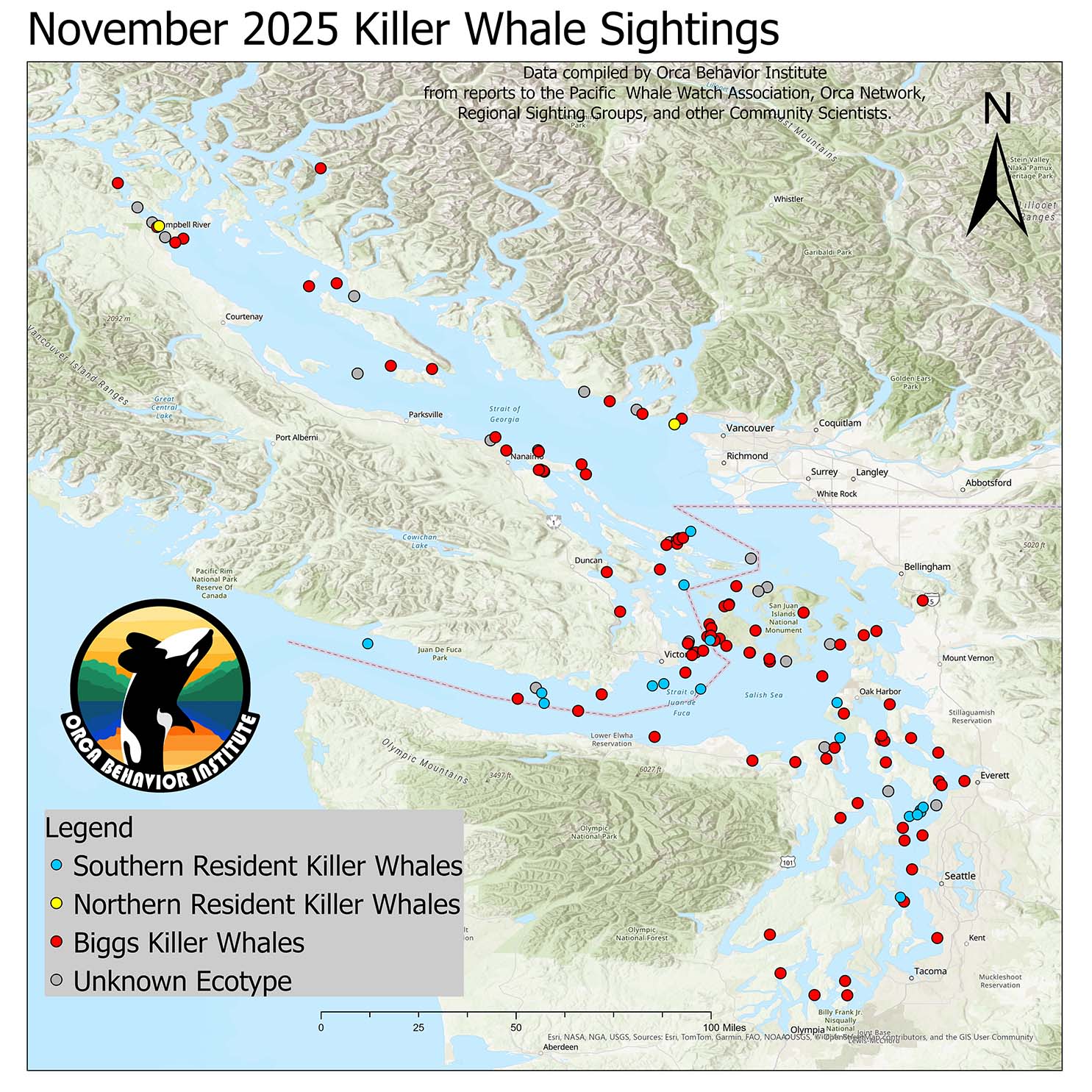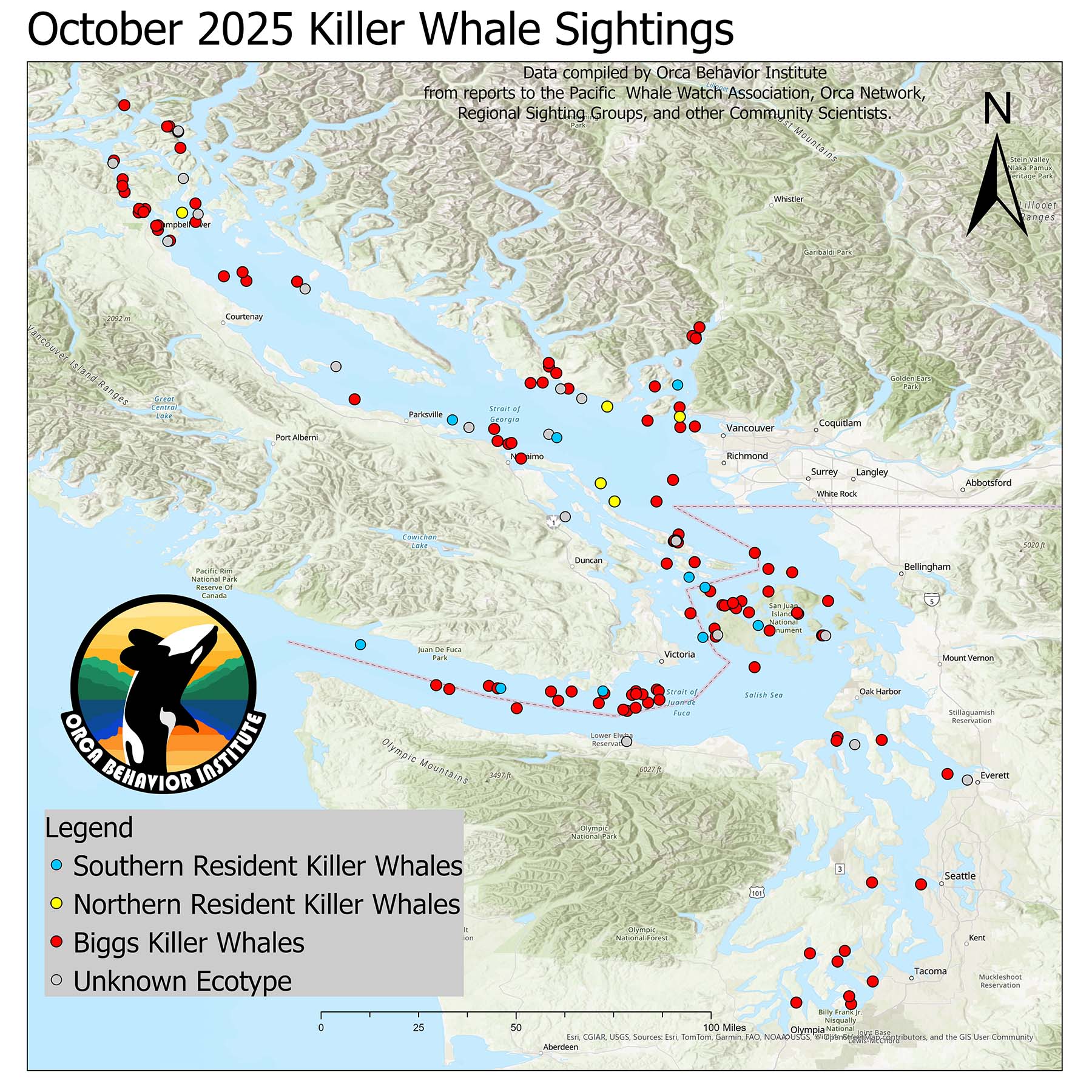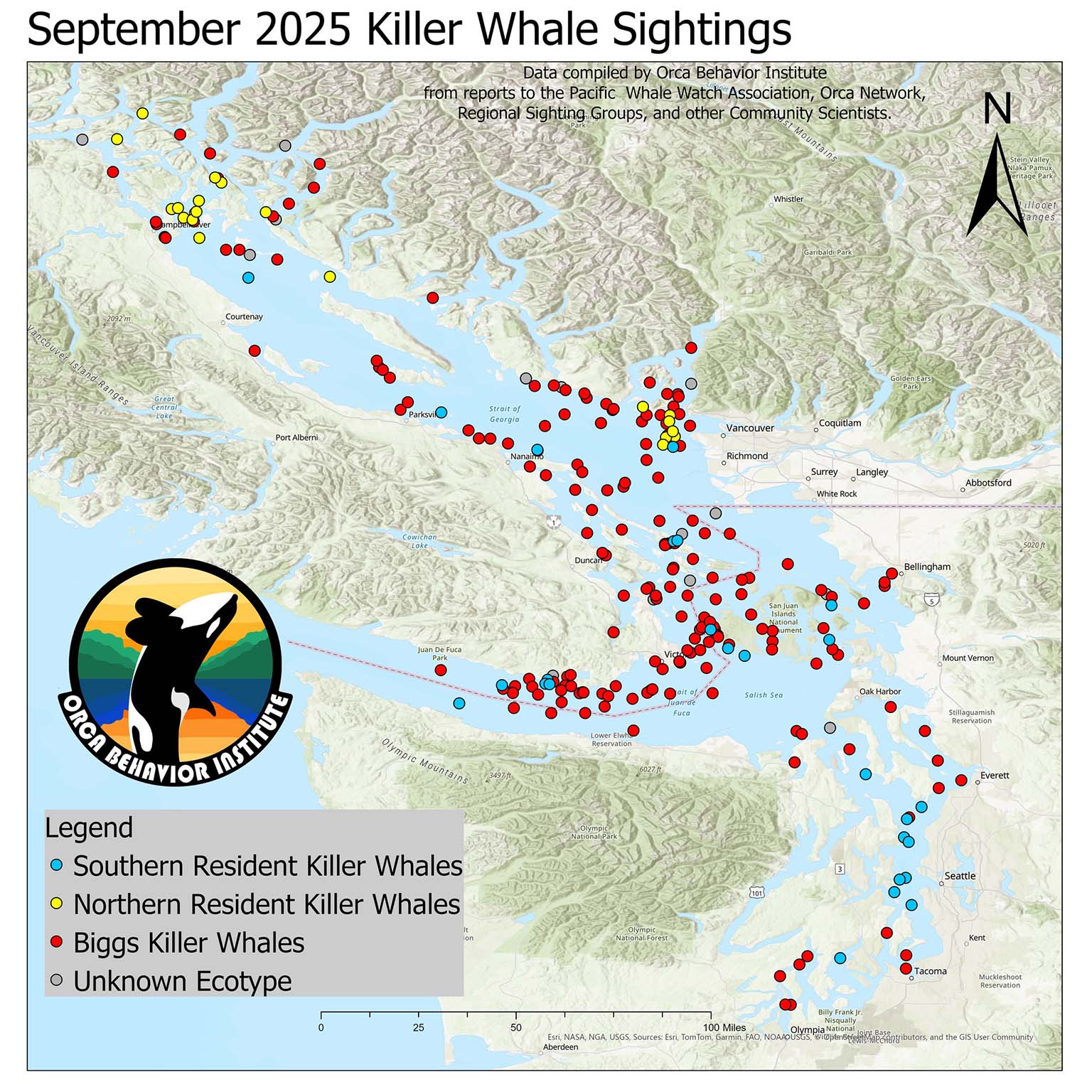October 2022
Here is our October 2022 Salish Sea killer whale sightings map!
It was a fairly busy month, though perhaps not the month we anticipated. The Southern Residents were confirmed present on 20 days - the most of any month in 2022 - and we speculate based on travel times and locations that they were in fact present at least 24 days even though they weren't detected. However, it was *only* J-Pod that made an appearance in inland waters in October! Usually, we expect all three pods to be around in the autumn and being to foray into Puget Sound for the fall chum runs together. You can see from the map that Js did spend a decent amount of time in Puget Sound, but with the late summer-like weather with no rain well into October, it's likely the chum are running late as well.
Bigg's killer whales were confirmed present on 28 days last month, tying their October record from last year. While they were seen all throughout the Salish Sea, you can see a particular spike of sightings between Race Rocks and Sooke in the Strait of Juan de Fuca, an area that seemed particularly active this October as it was also host to groups of actively feeding humpback whales.
About 90 individual Bigg's were confirmed present, similar to the total number seen each month in July through September but lower than the peak of 120+ different whales in March through June. The T49As, T49Bs, and T49C were all here and the Strait of Juan de Fuca also saw visits from a few of the "high Ts", the T252s, who regularly visit late in the year and are also known from California.
Late in October the rains began and it almost feels like we've gone straight from summer to winter with no autumn in between. We'll see if that means more of the Southern Residents in Puget Sound in November - it's off to a good start with at least L-Pod coming in and heading that way last night.
Note on reading the map: Each dot represents the first location of a unique sighting of a group of whales on a given day, so this doesn't represent everywhere the whales traveled; instead it gives an overall sense of the number of unique whale sightings for the month. The gray dots indicate "unknown ecotype", meaning killer whales were confirmed but it was not possible to confirm specific whale IDs.





